
Figure. Most people who have been to Afghanistan find it an extraordinary place, full of contrasts that evoke strong emotions. I am no exception. In Afghanistan I feel a strong passion for life. Covering my head with a scarf and wearing my shalwar kameez — baggy pants with a long flowing shirt — I reacquainted myself with the simple pleasures of basic human interaction. Having tea with strangers, one of my most pleasurable experiences, helped me to learn Dari, one of the 2 main languages of Afghanistan, and enabled me to enter the world of rural women who speak no English. For me, one of the most rewarding aspects of working in Afghanistan was to find that, when both men and women got to know me, my life was viewed as a viable alternative to early marriage. I was amazed one day to witness one of our male employees counsel another to send his daughter to an uncle's house so she could attend school, helping her escape his fate of marriage at the age of 14.
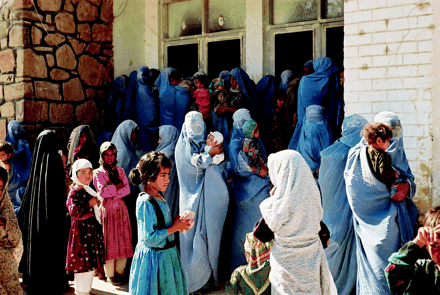
Figure. Six months after the Taliban had fallen, this was the scene at the hospital in Qala-i-Nau, a mid-sized town in the northwest where (contrary to Western assumptions) the burka has been worn for centuries. Unaccustomed as I was to talking to people without seeing their faces, at first I found myself avoiding these “blue ghosts.” Soon it became evident that, in contrast to my shyness, they were curious about my uncovered face and enticed me to engage in conversation, often peeking from beneath their burkas. Gradually I was able to perceive happiness, sadness, anger and strong femininity emanating from within the burka. Interacting with these women became fun, an interesting learning experience; eventually I wondered whether, in their anonymity, they had a type of freedom that few Western people can understand.
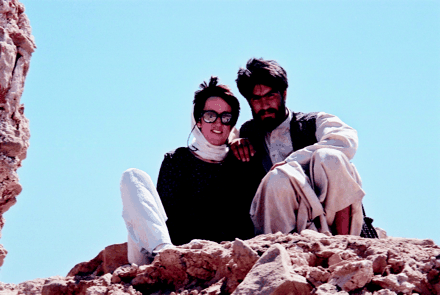
Figure. Before I arrived in Afghanistan, my primary fear was losing my independence. What I experienced was an unexpected sort of charmed freedom. As a foreign educated woman, I had a kind of diplomatic immunity from the restrictions that Afghan women experienced. This enabled me to do things that were extraordinary in such a place, such as running, shopping and even swimming (provided I was fully clothed and accompanied by a male escort, such as the man in this picture). During these activities Afghans and I openly discussed our different cultural rules, an experience that led to trust. Eventually, the men allowed me to participate in warm discussions with the highly protected rural Afghan women. One sunny day on a village road, joking with 3 Afghan men who had been friends for several years, I suddenly realized that although I had met them only a few months ago, I was the only one who had met each of their wives and daughters — a unique perspective linking 2 very separate rural worlds.

Figure. With the appearance of my camera these hospitable, joking men who were repairing a broken cable bridge and had invited us to share tea suddenly became serious — but only for the photograph. Outside of their homes, the world of the Afghans is a tough place where guns are often used to fulfil one of the most ancient yet important male roles, that of protector. In many houses, a gun stands in the corner like a frequently used broom while, along the street, men on foot or riding horses and donkeys carry robust Kalashnikovs slung over one shoulder. For a Canadian, the accessibility of these weapons in daily life is shocking; yet with surprising quickness I adapted, soon freely engaging gun-toting men in conversation as if they were harmless. Under the new government, soldiers collect guns from villagers in an attempt to disarm the people and improve safety. Sadly, it is rumoured that the same guns appear soon afterward for sale in nearby bazaar stalls, perpetuating the availability of arms and improving soldiers' incomes rather than public safety.

Figure. One of the frustrations of health care in Afghanistan is that anyone with a minimal knowledge of medications and enough money to buy a supply of them can be a “doctor.” This is a lucrative business. When a local “doctor” tells someone that 2 injections and 3 oral medications are needed to treat a scorpion sting, nothing less will do. This can be changed, slowly, through public education but, first, local health care workers need to be trained to prescribe medication appropriately. This pharmacy assistant trained by Médecins Sans Frontières often had to face the wrath of disappointed patients. Although our drugs were free, their quantity was often perceived as insufficient. The patients in this tranquil picture are satisfied, but this was not always the case. I was once surprised to see an Afghan man wilting in front of angry women who would not leave without the drugs they wanted; he enlisted help from me, a foreign woman.
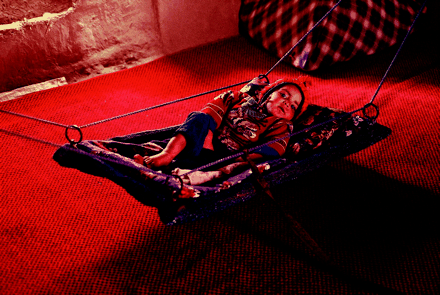
Figure. In Afghanistan, children are a source of joy and wealth, but because the infant mortality rate is so high the mother's health is of prime importance: if her health is maintained, she can carry on producing more offspring. One day, a midwife and I arrived at a goat-hair tent after a 20-minute run with a distressed nomadic man whose wife was having trouble delivering twins. We entered the tent to see the second dead male twin wrapped in a rag and a pool of blood being shovelled with a cooking utensil into a hole in the ground. Relief, not despair, predominated. In the corner of the tent, propped up by blankets, the frail mother was tired but alive. In the view of this poverty-stricken family, Allah had smiled on them: these twins would have been the eighth and ninth child to feed on the resources of a dwindling herd of goats. In rural Afghanistan over 99% of women are delivered by the oldest woman of the family, someone who usually knows little about hygiene. Médecins Sans Frontières emphasizes to traditional birth attendants the importance of proper hygiene and tetanus vaccinations.
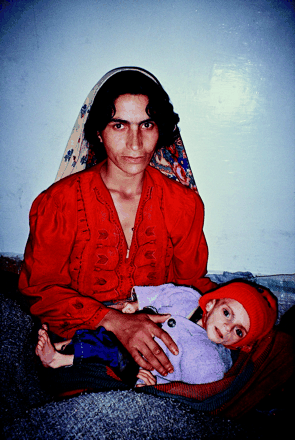
Figure. In western Afghanistan, after 4 consecutive years of drought, this past winter finally yielded adequate rainfall, giving rise to summer wheat, autumn corn and an unrealistic hope by the international community that sufficient food will exist this year for the entire country. Numerous children under the age of 5 suffer from both acute and chronic malnutrition. The obvious but challenging short-term solution is feeding programs that target young children and their families. This poor Afghan mother had 9 skinny children, one of whom she feared may die, since he was weaker than the rest. To cure him, a health care worker told her, she must stay with her son in a feeding centre — a simple concept to us in the Western world but an impossible idea in her view, since all 9 children needed her attention. After refusing to stay, she was given weekly rations of high-energy food for the malnourished child. Contrary to instructions, she divided it among all 9 of her hungry children. In her survival-attuned eyes, the healthy 8 were better “investments.” Education for both the Afghans and foreign workers is key to the success of these programs.
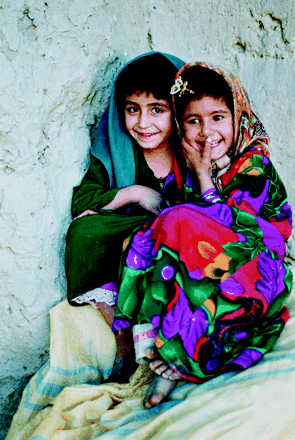
Figure. One of the most difficult aspects of providing health care in isolated locations of rural Afghanistan is the lack of employable, educated women in this strict Muslim society where girls are taught only by women and where female teachers are scarce. The future of most girls in rural Afghanistan is limited to marriage at a young age. Imagine our delight when, searching for clinic staff, we heard of a fully trained female Azerbaijani doctor married to an Afghan nomad, who lived a 3-hour horseback ride beyond our remote clinic site. Her brother and father-in-law transmitted the message, revealing her boredom with pasturing sheep and her desire to start medical practice with Médecins Sans Frontières in approximately 2 months, when she returned from the pasturelands. Sadly, I left before she had finished her nomadic work, but I still harbour visions of this veiled woman of the future at work in the Afghan mountains.
Footnotes
-
Editor's note — November 2001. Bombs were falling on Afghanistan, and Vancouver physician Maureen Mayhew felt compelled to return to the country where she had recently spent 9 months managing a clinic and doing outreach work (see CMAJ 2000;163[12]:1601). She offered her services to Médecins Sans Frontières and, after a 3-day journey by plane, train, foot and Landcruiser, began teaching in a hospital in Herat. Six weeks later, she left the city to explore health and nutritional issues in remote villages. This photo essay conveys Mayhew's impressions during “a euphoric 9-month period of rapid post-Taliban social change” in Afghanistan.







